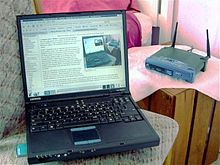
Back نطاق إس Arabic এস ব্যান্ড Bengali/Bangla Banda S Catalan Banda S Spanish باند اس Persian Bande S French S band HE Pita frekuensi S ID Banda S Italian Sバンド Japanese
This article needs additional citations for verification. (June 2021) |
Frequency range | 2 – 4 GHz |
|---|---|
Wavelength range | 15 – 7.5 cm |
Related bands |
| Radio bands | ||||||||||||
|---|---|---|---|---|---|---|---|---|---|---|---|---|
| ITU | ||||||||||||
|
||||||||||||
| EU / NATO / US ECM | ||||||||||||
| IEEE | ||||||||||||
| Other TV and radio | ||||||||||||
The S band is a designation by the Institute of Electrical and Electronics Engineers (IEEE) for a part of the microwave band of the electromagnetic spectrum covering frequencies from 2 to 4 gigahertz (GHz). Thus it crosses the conventional boundary between the UHF and SHF bands at 3.0 GHz. The S band is used by airport surveillance radar for air traffic control, weather radar, surface ship radar, and some communications satellites, particularly satellites used by NASA to communicate with the Space Shuttle and the International Space Station. The 10 cm radar short-band ranges roughly from 1.55 to 5.2 GHz. India's regional satellite navigation network (IRNSS) broadcasts on 2.483778 to 2.500278 GHz.[1]
The S band also contains the 2.4–2.483 GHz ISM band, widely used for low power unlicensed microwave devices such as cordless phones, wireless headphones (Bluetooth), garage door openers, keyless vehicle locks, baby monitors as well as for medical diathermy machines and microwave ovens (typically at 2.495 GHz). One of its largest uses is 2.4 GHz IEEE 802.11 Wi-Fi wireless networks, allowing smartphones, laptops, printers and TVs to connect to the internet without cables.

- ^ "Indian Regional Navigational Satellite System Signal In Space Interface Control Document for Standard Positioning Service" (PDF). Indian Space Research Organization. August 2017. Archived from the original (PDF) on 12 November 2020. Retrieved 8 February 2019.